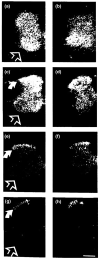Qualitative review on N-methyl-D-aspartate receptor expression in rat spinal cord during the postnatal development: Implications for central sensitization and pain
- PMID: 33131183
- PMCID: PMC7894158
- DOI: 10.1002/dneu.22789
Qualitative review on N-methyl-D-aspartate receptor expression in rat spinal cord during the postnatal development: Implications for central sensitization and pain
Abstract
The N-methyl-D-aspartate receptor (NMDAR) is an important mediator of central sensitization and nociception in the rat spinal dorsal horn. The NMDAR subunits and splice variants determine the properties of the receptor. Understanding the expression of NMDAR subunits in spinal cord during the neonatal development is important as it may have consequences for the process of central sensitization and nociception in later life. In this review, a systematic literature search was conducted using three databases: Medline, Embase, and PubMed. A quality assessment was performed on predetermined entities of bias. Thirteen articles were identified to be relevant. The results show that NMDAR subunits and splice variants are dynamically expressed during postnatal development in the spinal dorsal horn. During the first 2 weeks, the expression of less excitable GluN2A subunit and more sensitive GluN2B subunit increases while the expression of high excitable GluN2C subunit decreases. During the 2nd week of postnatal development GluN1 subunits with exon 21 spliced in but exon 22 spliced out are predominantly expressed, increasing phosphorylation, and transport to the membrane. The data suggest that in rats, the nociceptive system is most susceptible to central sensitization processes during the first two postnatal weeks. This may have important consequences for nociception and pain responses in later life. From this, we conclude that targeted therapy directed toward specific NMDAR subunits is a promising candidate for mechanism-based treatment of pain in neonates.
Keywords: NMDA-receptor; central sensitization; dorsal horn; expression; neurodevelopment; pain.
© 2020 The Authors. Developmental Neurobiology published by Wiley Periodicals LLC.
Conflict of interest statement
All authors declare that they have no conflict of interest.
Figures


Similar articles
-
Activation of α2 adrenoceptors inhibited NMDA receptor-mediated nociceptive transmission in spinal dorsal horn of mice with inflammatory pain.Neuropharmacology. 2014 Feb;77:185-92. doi: 10.1016/j.neuropharm.2013.09.024. Epub 2013 Oct 5. Neuropharmacology. 2014. PMID: 24103367
-
The spinal NR2BR/ERK2 pathway as a target for the central sensitization of collagen-induced arthritis pain.PLoS One. 2018 Jul 19;13(7):e0201021. doi: 10.1371/journal.pone.0201021. eCollection 2018. PLoS One. 2018. PMID: 30024967 Free PMC article.
-
Phosphorylation of spinal N-methyl-d-aspartate receptor NR1 subunits by extracellular signal-regulated kinase in dorsal horn neurons and microglia contributes to diabetes-induced painful neuropathy.Eur J Pain. 2011 Feb;15(2):169.e1-169.e12. doi: 10.1016/j.ejpain.2010.06.003. Epub 2010 Jul 1. Eur J Pain. 2011. PMID: 20594879
-
Evidence for spinal N-methyl-d-aspartate receptor involvement in prolonged chemical nociception in the rat.Brain Res. 2016 Aug 15;1645:58-60. doi: 10.1016/j.brainres.2016.02.001. Epub 2016 Feb 15. Brain Res. 2016. PMID: 26892026 Review.
-
Spinal AMPA receptors: Amenable players in central sensitization for chronic pain therapy?Channels (Austin). 2021 Dec;15(1):284-297. doi: 10.1080/19336950.2021.1885836. Channels (Austin). 2021. PMID: 33565904 Free PMC article. Review.
Cited by
-
Neuroplasticity in the transition from acute to chronic pain.Neurotherapeutics. 2024 Oct;21(6):e00464. doi: 10.1016/j.neurot.2024.e00464. Epub 2024 Oct 21. Neurotherapeutics. 2024. PMID: 39438166 Free PMC article. Review.
-
Developing nociceptor-selective treatments for acute and chronic pain.Sci Transl Med. 2021 Nov 10;13(619):eabj9837. doi: 10.1126/scitranslmed.abj9837. Epub 2021 Nov 10. Sci Transl Med. 2021. PMID: 34757806 Free PMC article.
-
Intrinsically disordered proteins play diverse roles in cell signaling.Cell Commun Signal. 2022 Feb 17;20(1):20. doi: 10.1186/s12964-022-00821-7. Cell Commun Signal. 2022. PMID: 35177069 Free PMC article. Review.
References
Publication types
MeSH terms
Substances
LinkOut - more resources
Full Text Sources
Medical

